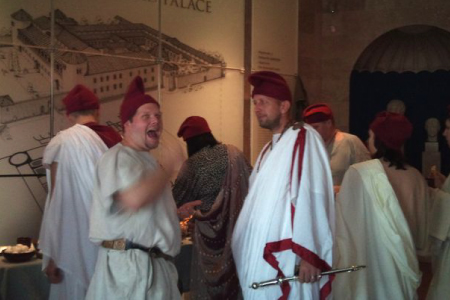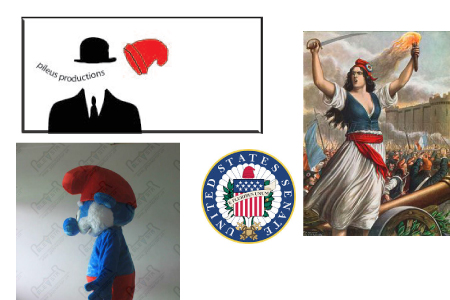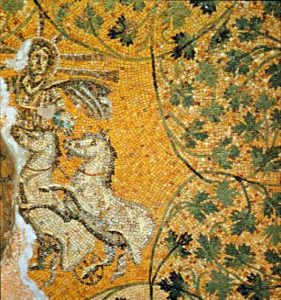
I had an epiphany the other day when I wondered why “disillusionment” has such a negative connotation. Sure, I too worked to create fake Santa visitations for my kids and I believe the meta message might have been a problem now; the kids think that protectors and guardians should participate in deceptions for the purpose of preventing disillusionment.
When we look deeply into the timing and origins of holidays and observances, we realize they inculcate and formalize important astronomical events, perform social functions, and are allegorical of the human condition in general.
Christ’s mass, as with the countless other observances of Saint’s and their holy days are almost always serving those three aims. Christmas co-opted the Roman Saturnalia feast which was astronomically to celebrate the winter solstice, when the sun began to ascend again in the skies and the days grew longer again. If you want to understand what a solstice is, read this blog (which I have to read repeatedly to even understand).
Socially, the Saturnalia feast provided an important social release mechanism. Because human slavery was legal in the Roman Empire, this was the one week that slaves could wear the red elves’ caps (The Phrygian Cap or Pileus) of a freed slave. For this week, they could drink, gamble, be disrespectful to their masters, receive money, and be served by their masters for meals.
In terms of the human condition, the feast told of the fractal hero’s journey of descent into death and darkness and then rising out of it and draws heavily from the many aspects of the hero gods of Jupiter, Apollo, and Mithras. The Sol Invictus (or invincible son) is also a shared theme of the crucifixion of Jesus and his return from death. This mosaic from the catacombs under St. Peter’s in Vatican city has been interpreted as a Christ image but may have originally been representative of Apollo, the sun god, who was the invincible sun, not son.
We are entering a time of increased consciousness and information flow. In Late Antiquity, people could practice multiple religions as long as they acknowledged the divinity of the emperor and paid taxes. If we are to draw similarities to the Pax Romana that ruled for around five hundred years and our current Pax Americana, we can say we also worship of a single currency, military domination through vassal states, and voluntary slavery of the mind and bodies of people who share the pride of belonging to a world civilization rather than tribal and traditional cultures. Part and parcel of that assimilation into a world order is the ability to syncretically maintain and elide the peculiar origins of our shared mythology.


5 thoughts on “The hidden Roman origins of Christmas”
It is likely that most people have not been able to follow the reasoning of your little treatise called, “The Hidden Roman Origins of Christmas”. If you allow me to condense your statements into deductive syllogisms, your reasoning would go something like this:
Premise 1: Christmas is celebrated on December 25
Premise 2: The Roman Saturnalia feast was celebrated on December 17
Conclusion: Therefore, Christmas co-opted December 25 from the Roman Saturnalia feast as the date to celebrate Christ’s birth
The above logic is like saying: Ed Park celebrates his birthday on December 25. Sally Pike celebrates her birthday on December 17. Therefore, Ed Park is Sally Pike; or Therefore, Ed Park co-opted Sally Pike’s birthdate. In order for deductive syllogisms to be sound reasoning, all premises must be true, the conclusion must be true, and the conclusion must flow from the premises. Your first two premises might be true, but sound reasoning indicates that December 17 is not the same as December 25; but even if they were the same date or generally corresponded with the winter solstice (Dec 21 or 22 in northern hemisphere), the conclusion of Christmas co-opting the Roman Saturnalia feast does not flow from the premises.
Your second argument was that since the death, burial, and resurrection of Jesus was similar to vague stories of gods dying and rising from the dead, then the death, burial, and resurrection of Christ must have been fabricated and copied from those previous accounts of mythology. Your statement was as follows: “In terms of the human condition, the feast told of the descent into death and darkness and then rising out of it and draws heavily from the many aspects of the hero gods of Jupiter, Apollo, and Mithras. The Sol Invictus (or invincible son) is also a shared theme of the crucifixion of Jesus and his return from death.” If we convert your statement into a deductive syllogism, it could be phrased as follows:
Premise 1: Previous mythological stories vaguely referenced gods that died and were raised from the dead.
Premise 2: The Bible states that Jesus died and was raised from the dead.
Conclusion: Therefore, the story of Jesus’ dying and being raised from the dead was fabricated and copied from ancient mythologies.
Your reasoning is like saying: Sally Pike wrote about anti-aging effects from taking TA-65. Ed Park wrote about anti-aging effects from taking TA-65. Therefore, Ed Park must have fabricated and copied his anti-aging stories from Sally Pike. It appears that you have not yet developed a methodology for discerning truth from falsehood.
In any case, you miss the real points about the date of Christmas and the death and resurrection of Christ. The Bible does not declare the date of Christ’s birth; and the early Christians greatly rejected the pagan celebrations that honored and celebrated dates. There was no historical record speculating about the date of Christ’s birth until the fourth century after Christ. The Bible and early Christians did not need to honor the date of Christ’s birth but the substance of who Christ was and what he said and did. The idea of celebrating Christmas began around 350 AD when Pope Julius I declared December 25 to be the official date for Christmas; and in 529 AD when Emperor Justinian declared Christmas to be a civic holiday. However, the date and correlation with other dates, such as the winter solstice, do not matter. The importance of celebrating the birth of Christ is his message of loving each other and how we show this love to others not only on Christmas day but every day. The reasons for selecting December 25 have been widely debated over the years with correlations to the date being nine months following the Immaculate Conception of Jesus by Mary to correlations with the winter solstice and numerous other celebrations based on that general timeframe. However, correlation does not equate to cause-and-effect (e.g., If a rooster crows every morning before the sun rises, does that mean that the rooster causes the sun to rise?)
As to the death and resurrection of Christ, there is much reasoning and information supporting both claims. One of the best books on this subject is entitled, “The Case for Christ” written be Lee Stroebel, an investigative reporter with the Chicago Tribune who set out to prove that the stories about Jesus were not true.
Best wishes to you and your quest to discern the “truth”.
Well you kind of lost me here but thanks for the thoughtful reply.
Pingback: I just turned 50…How does it feel? « Lokahi Guru
Pingback: Bread and Circuses – Recharge Biomedical
Pingback: Bread and Circuses – Lokahi Guru